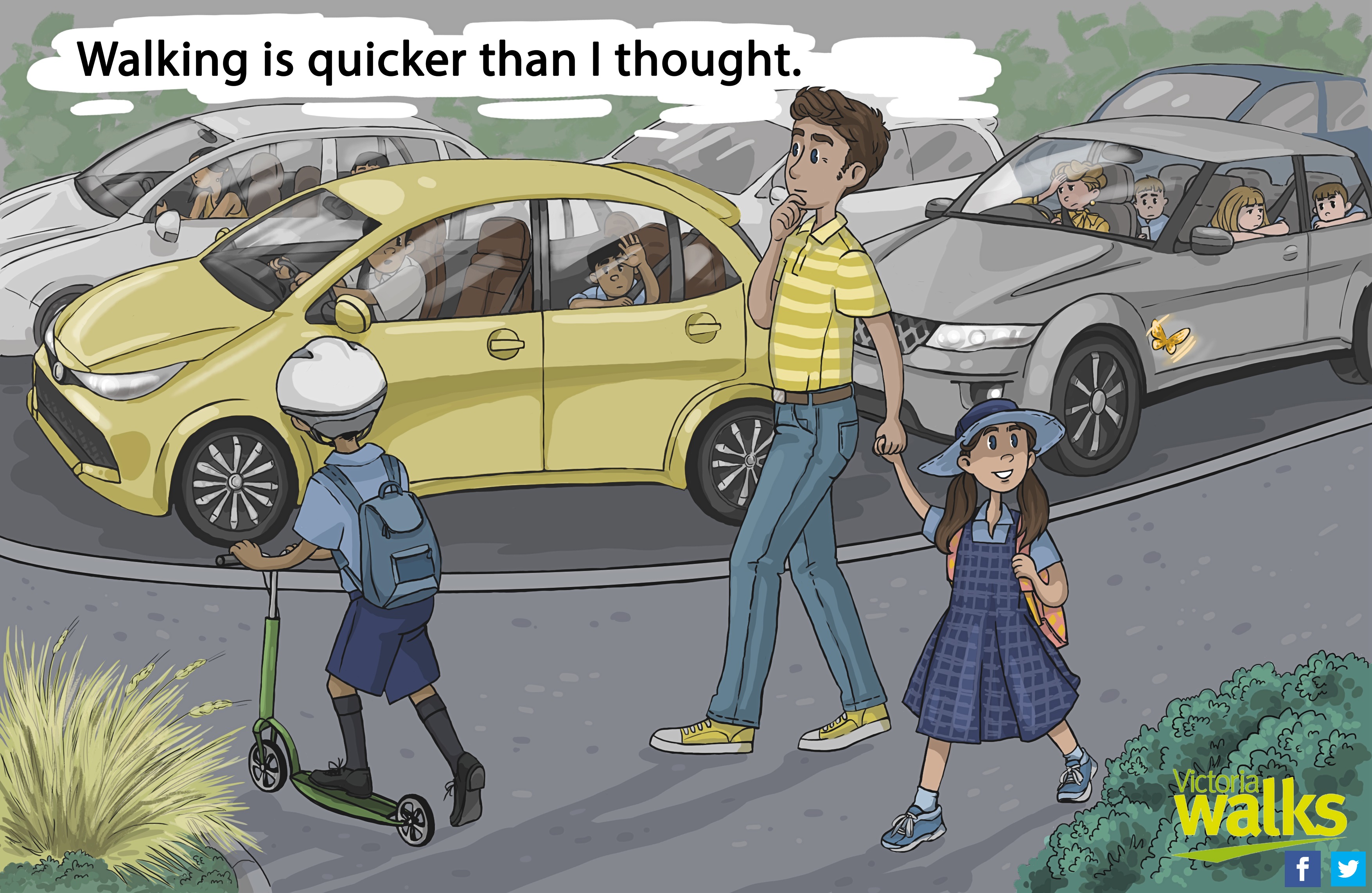School run causing congestion
30 Jan 2023
Illustration by Elena Strelnikova
Victoria Walks is calling on the state government to set an ambitious target to double the number of kids walking to school after data revealed a large proportion of Melbourne’s morning traffic is related to the school drop-off.
Analysis of the latest government travel data by Victoria Walks found 24.9% of vehicle trips in metropolitan Melbourne beginning between 8-9am are to a primary or secondary school. The analysis is part of a new report on recent trends in travel activity, including walking.
Victoria Walks Executive Officer Ben Rossiter said the data showed school-related traffic was a significant contributor to Melbourne’s peak-hour congestion and was also making streets in school neighbourhoods less safe and less appealing for families wanting to walk or ride.
“According to VicHealth, walking to school has many benefits for children’s physical and mental wellbeing,” Dr Rossiter said. It also helps children to develop healthy habits and the skills they need to get around and become independent young people.”
“Only ¼ of Australian children aged 5-12 are getting enough physical activity. Swapping a short car trip to school for a walk each day will give our kids more opportunity to be active.”
Long-term data shows the proportion of Victorian students who walk to school has fallen from 49% in 1970 to 20% in recent years.
“The Government needs to reverse the trend and should be aiming to double the proportion of kids who are walking to school.”
Victoria Walks is calling upon the state government to develop a funded action plan including:
- A clear target to double the proportion of students who walk some or all of the way to school.
- Funding of $150m per annum to improve priority pedestrian routes, including walking-specific road safety projects in local communities.
- More state-level investment for transport behaviour-change programs in schools.
- Redevelopment of Victoria’s current school zones into ‘safe speed neighbourhood precincts’.
Dr Rossiter said investing in programs and road safety projects that support families to choose walking would be a cost-effective way for government to boost activity levels among young people while also tackling congestion.
“Doubling the number of kids who walk some or all of the way to school would transform neighbourhoods into calmer, more pleasant places by reducing traffic on local streets,” Dr Rossiter said.
He said Victoria’s current 40kmh school zones were flawed because they only reduced traffic speeds at the very final stage of a walk to school and didn’t make the whole journey to school safer.
Dr Rossiter said a clear focus on switching school trips to walking would be crucial if the government was to achieve its aim of increasing transport trips made by walking and cycling to 25% by 2030.
“Government strategies should not be wish lists,” Mr Rossiter said. “They must include properly funded actions that are able to achieve objectives and give Victorians healthier transport options.”
Dr Rossiter said parents could also play a positive role by choosing to leave the family car in the driveway in the morning, or by avoiding driving on routes popular with children who walk and ride.
“Not every family or child can walk all the way to school, but with leadership from government more families could feel supported and confident to drop their kids further from the school gate to walk part of the way.
Dr Rossiter said 2023 presented a golden opportunity to capitalise on the uptick in walking and cycling that occurred during Victoria’s lockdown years.
“Victorian families walked together more often during the lockdowns and with many adults continuing to work more from home we’d encourage parents and carers to think about the benefits of walking as part of daily life”.
Report: Find out more about recent trends in walking and transport in Melbourne
More coverage in the Herald Sun, January 30th 2023